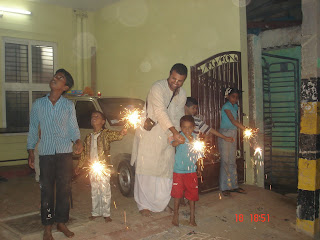FROM Ayyangar's Blog
It has become a fashion to talk about making a city Singapore by our politician and city mayors.Let the talks of Magic Boxes , flyovers, elevated roads, Metro, mono/tube rails be kept aside for a moment and concentrate on the following points which are not of long term nature and can be implemented with a minimum outlay of funds RIGHT NOW FROM TOMORROW ITSELF if the authorities concerned local body & Traffic Police are serious about bringing about a change.
1. Remove or shift all the bus stops and auto stands which are situated immediately after a turning or circle. These are main hindrance in free flow of traffic. Penalise those bus drivers and auto drivers who stop the buses/autos at these turnings and bus stops.
2. Distance between two bus stops should not be less than half a kilometer. At present, there are many bus stops which are less than 100 meters apart and buses are not able to pick up speed.
3. Make footpaths free of hawkers. Stone slab footpaths are uneven. They should be properly plastered to have an even surface.
4. Public or for that matter any body including government agencies like water board, Telecom,Electricity board, cable operators who dig the road or footpath must be made accountable to restore them back to original failing which heavy penalty should be imposed.
5. Slow moving vehicles like bullock cart, hand driven carts, three wheeler rickshaws, Tonga, etc should not be allowed within the city limits during peak hours.
6. Any body driving two wheelers on the footpath to go ahead in a traffic jam situation must be penalised or his/her vehicles should be impounded.
7. At railway crossings, there is a common tendency by two as well as four wheelers to block the right side of the road in order to go ahead as soon as the train passes. This practice results in blockage of traffic on both sides of the crossing. Public who are also well educated should understand this.
8. Potholes on any road should be immediately filled up as soon as information is received. Road inspectors should be made accountable for not attending to any pothole.
9. Superior quality paint should be used for zebra crossing and other road humps as the paints used at present become faint or invisible after a weeks time.
10. Glow signs should be put up at the starting of all road dividers.
11. Traffic police should stop ignoring those who are driving talking over cell phones while driving.











